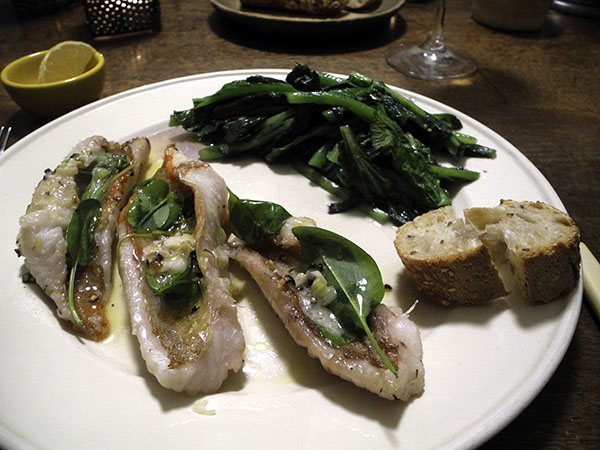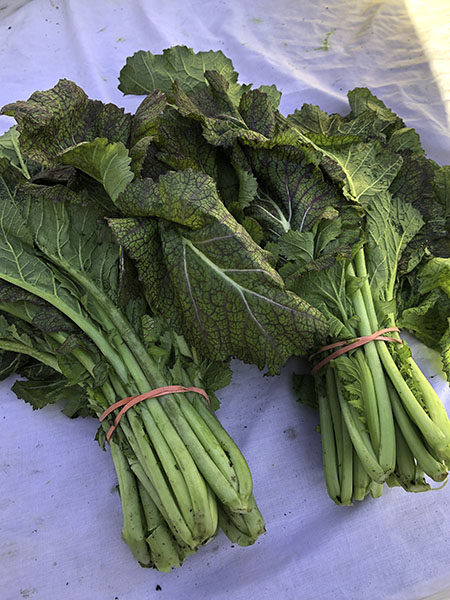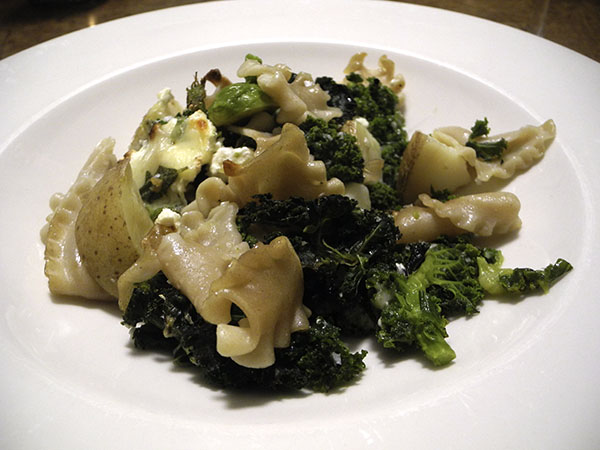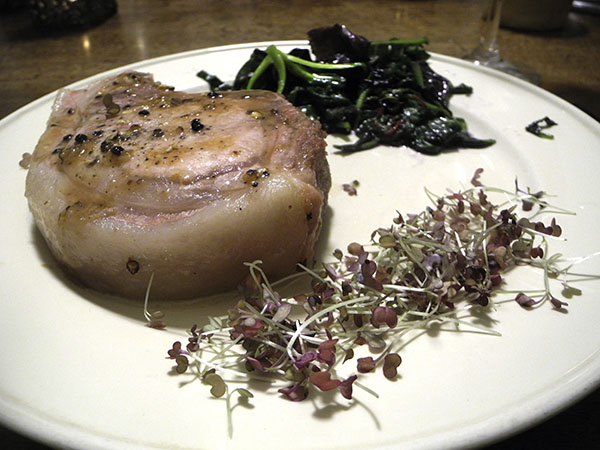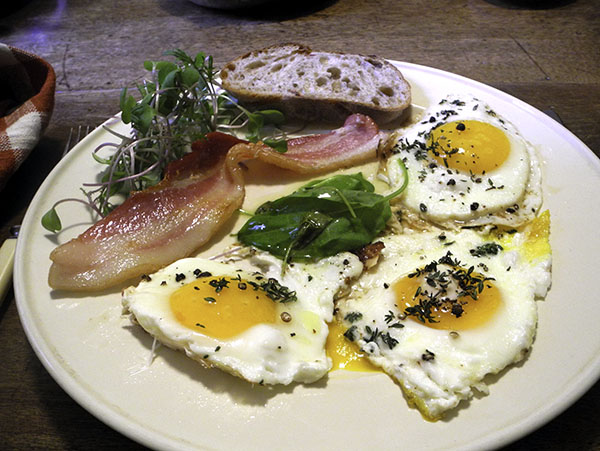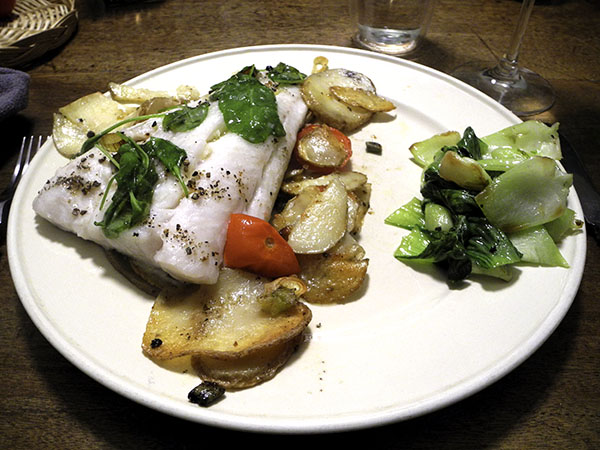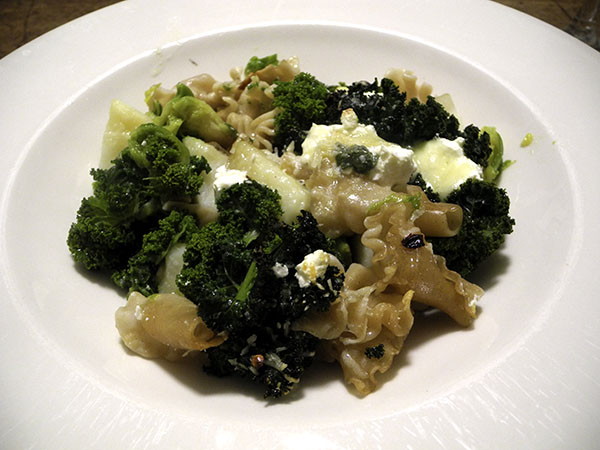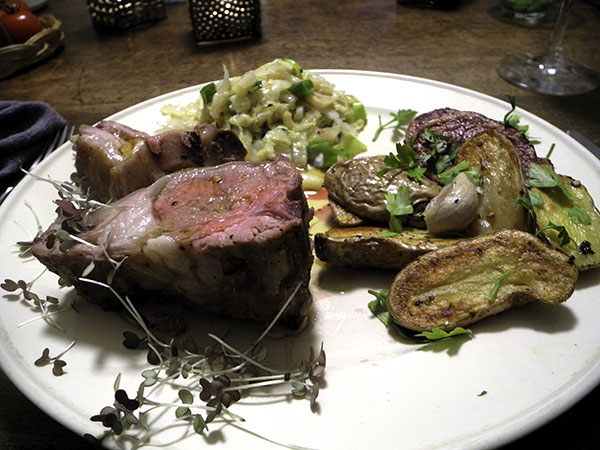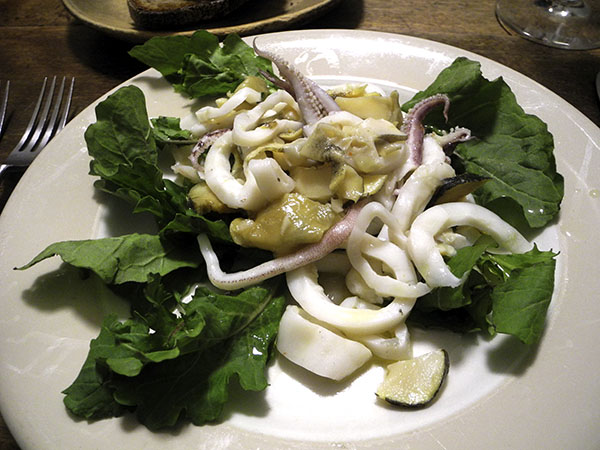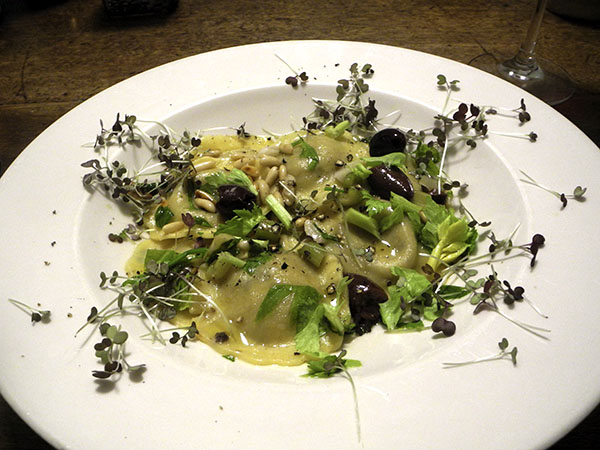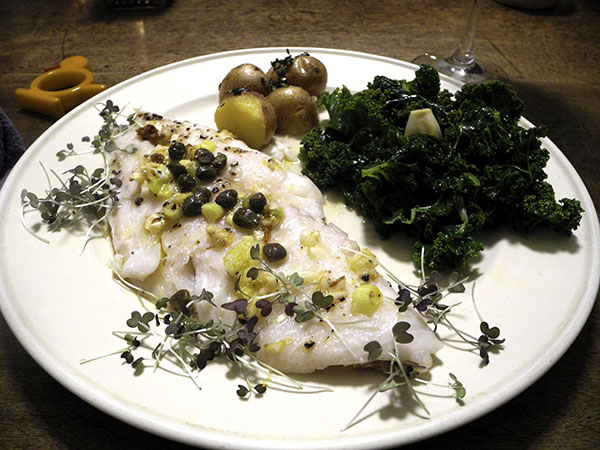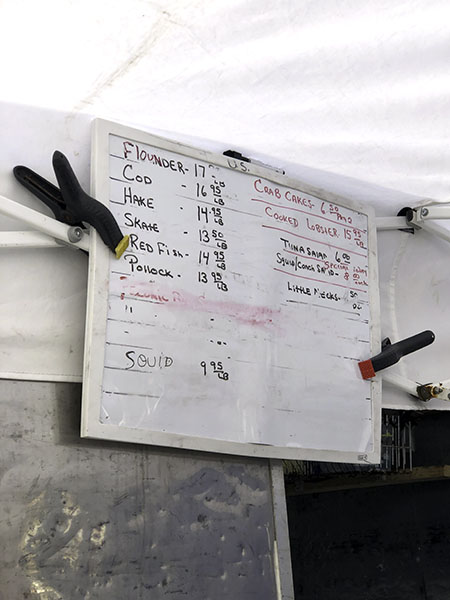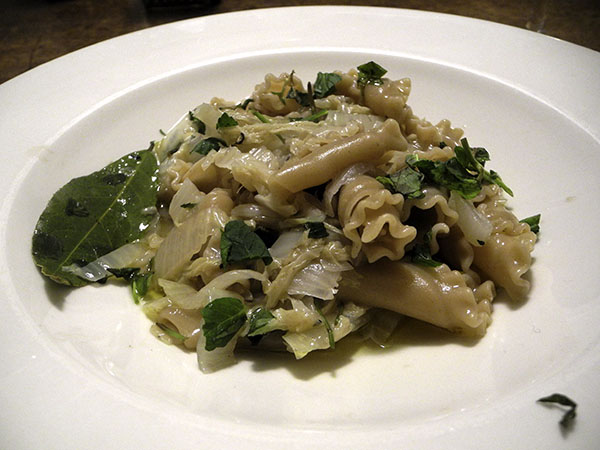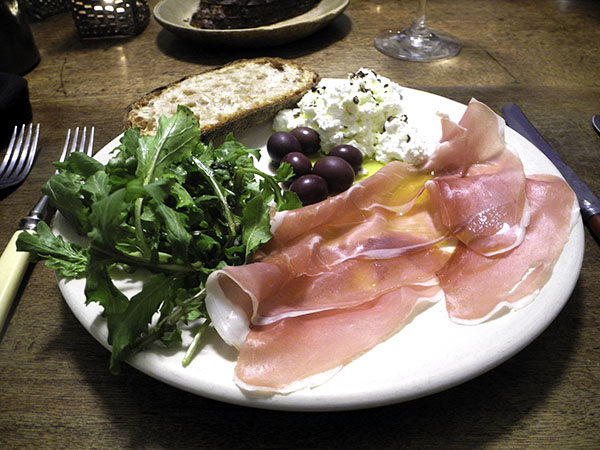
It was simply an assembled meal, and it would not have been remarkable, literally, except that it was so good and satisfying.
The antipasto was sourced entirely from things hanging around the apartment.
- two ounces of La Quercia’s Ridgetop Speck (applewood smoked prosciutto from pastured pigs) drizzled with a little olive oil (Badia a Coltibuono, from Gaiole in Chianti, Siena, Italy)
- fresh ricotta cheese from a local New Jersey farm (no other information available) from Chelsea Whole Foods Market, also drizzled with the olive oil
- Gaeta olives from Buon Italia, in Chelsea Market
- arugula from Phillips Farms, dressed with the same olive oil
- slices of a Balthazar Bread rye boule from Chelsea Whole Foods Market
The main course has been making regular stops on our table for days; this was its final appearance, at least in this production
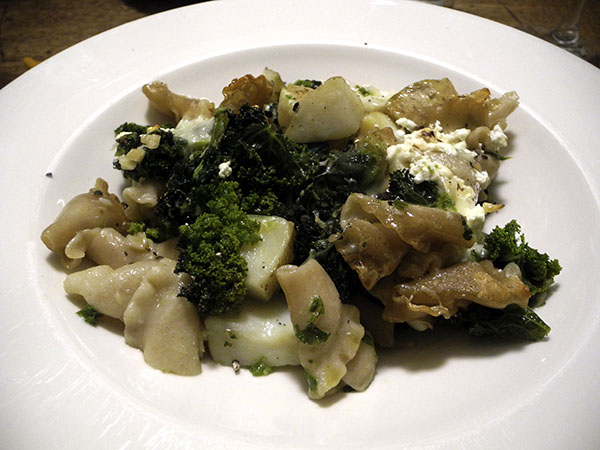
- a rich whole grain pasta combined with cheeses and 2 kinds of cabbage, originally prepared for last Saturday’s dinner, heated in a 350º oven for 12 minutes, now both more chewy and more crispy – and more flavorful – than ever; perfect

- the wine throughout the meal was an Argentinian (Mendoza) red, Penedo Borges Expresión Varietal Malbec 2016, the gift of a great friend, a great artist, and a great writer, An Xiao Mina
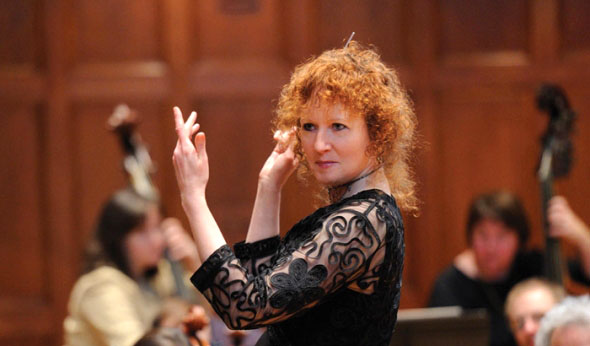
- the music throughout the meal was the album, ‘Sephardic Journey: Wanderings of the Spanish Jews’, by an intense Cleveland ensemble with a brilliant portfolio, Apollo’s Fire
[the image of An Xiao at TEDGlobal 2013 in Edinburgh, by James Duncan Davidson, is from TEDBlog]; the image of Jeannette Sorrell, founder of Apollo’s Fire, directing this program of the group, is from Classical Voice North America]
